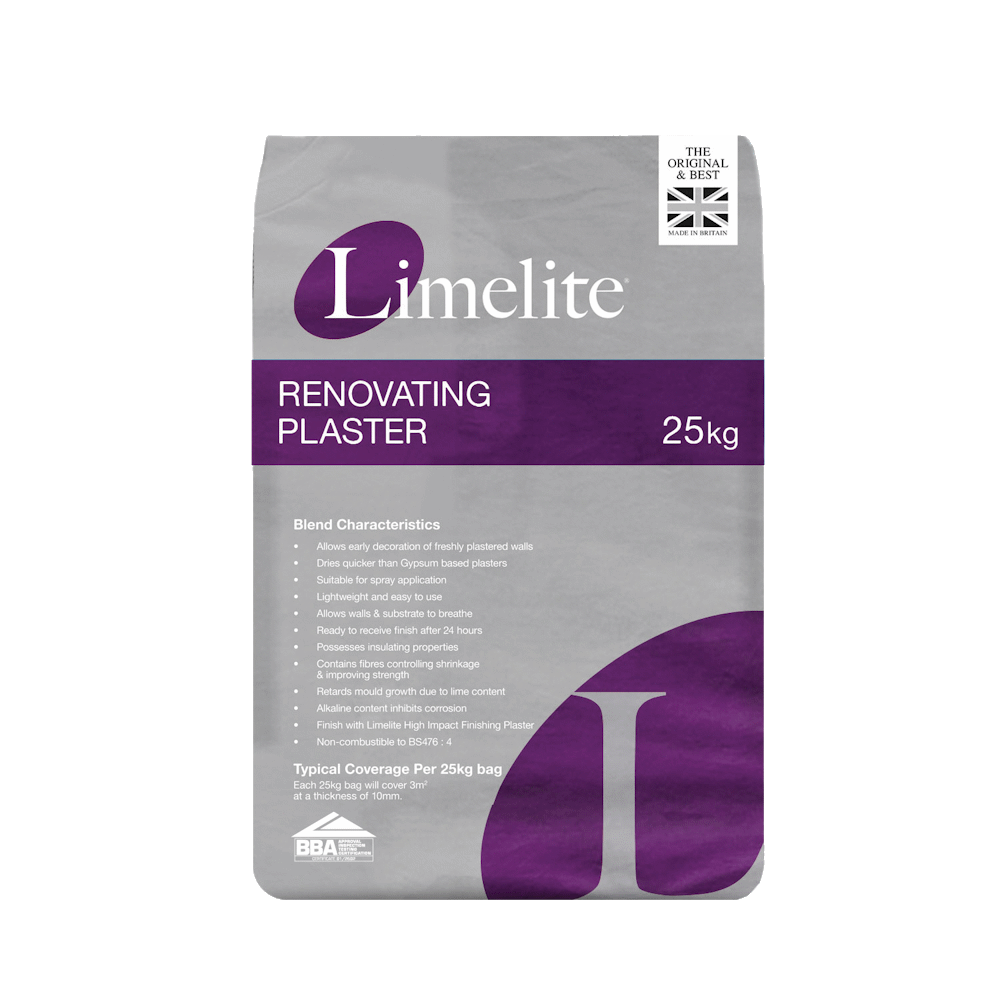How to choose a breathable plaster for flood repairs
With extreme weather patterns resulting in a number of serious flooding incidents in recent years, there is a growing recognition of the need to improve the resilience of UK housing stock, particularly on flood plains and in high-risk locations.
It is estimated that the 2015/16 winter floods cost the UK economy an estimated £1.6bn and the November 2019-March 2020 floods a further compared to £333m.
The National Assessment of Flood and Coastal Erosion Risk in England 2024 estimated that around 6.3 million properties (homes and businesses) in England are at risk of flooding from rivers, the sea, surface water.
The problem with gypsum plasters and flood damage
Conventional gypsum plasters are poorly suited to flood resilience as they are hygroscopic, absorbing and retaining water. This makes them particularly unsuitable for flood risk properties. It will also degrade and degrade and delaminate after immersion in water, with up to one metre above floor level usually being the worst affected area. Using gypsum plasters to repair and re-plaster flood damaged walls, requires an extended delay while walls dry out, otherwise moisture can damage the new plaster surface.
Lime renovating plasters and flood resilience
However there is an alternative. Modern lime-based plasters like Limelite Renovating Plaster are breathable, allowing moisture to be released.
This means they can be applied to damp walls, but allows any moisture still present in the substrate to be released. This enables faster repairs to flood damaged buildings without risk of damage to the plaster itself. It also helps to improve resilience and mitigate future flood damage by helping the walls of flood affected buildings to dry out more quickly with less damage to the plaster. This reduces repair bills and also that means buildings can be occupied sooner.
Where to use Lime renovating plasters?
The Environment Agency’s guidance in their ‘What to do before, during and after a flood’ booklet, includes suggesting that when repairing the walls of flood damaged properties lime plaster should be used instead of gypsum.
Lime renovating plasters are also particularly well suited to certain types of buildings, this includes:
• Older buildings built before 1930
• Solid walled brick or stone buildings used as residential accommodation, offices, hotels, restaurants or as entertainment venues
• Extensions of renovation of older homes with existing lime plaster
• Basement conversions as part of basement lining systems
• Moisture sensitive storage in buildings like museums, galleries or car storage facilities.
• Homes or commercial buildings on flood plains of at risk of flooding
Limelite breathable plaster system
The crucial aspect for any breathable plaster system is to make all elements breathable, including primers or bond coats and any paint finishes. It is also important not to over-work or polish the top-coat as this can impact the porosity of the finished surface. Limelite offer a three part breathable renovating plaster system consisting of:
Part 1 – Limelite Easy Bond – breathable primer
Part 2 – Limelite Renovating Plaster
Part 3 – Limelite High Impact Finishing Plaster
Easy to use and fast drying
The light weight plasters are easy to prepare by simply adding water and dry quickly, with additional plaster coats or paint applied in just 24 hours. This allows faster completion and less disruption.
The Limelite breathable plaster system is independently BBA accredited as a two-part system with Limelite Renovating Plaster and Limelite High Impact Finishing Plaster.
Breathable one coat plaster
Limelite also offer a Whitewall One Coat Plaster with the same breathable characteristics that is applied like a standard backing plaster but gives the finish and durability of a first-class finishing plaster. This offers a fast, effective solution for rapid repairs.
The importance of specifying a lime plaster for flood repairs
As the Environment Agency’s guidance acknowledges, lime plasters are far more capable of withstanding recurring flooding and water ingress than gypsum plasters. This can, in turn, reduce and future repair costs, salting, mould growth and recurring damp problems. Specifying a lime renovating plaster is also in the interest of the insurance provider as this is likely to reduce the duration and cost of any future repairs.
Improving future flood resilience
By specifying a plaster with breathable characteristics, structural damage caused by water can be reduced, making it easier and cheaper to clean up after a future flood, and helping residents to return to their homes as quickly and cost effectively as possible.
The Limelite plaster system is listed on NBS Source to make in easier for architects and conservation professionals to specify.
Breathable mortars for flood repairs
Where mortar has been damaged and re-pointing is required as part of repair work, Limelite mortars are an excellent choice. Limelite Lime Mortars are available in six standard colours, making it easier to match the existing mortar colour. They are also breathable, allowing moisture to evaporate and reducing trapped moisture and the associated risk of damage from frost or mould growth.


